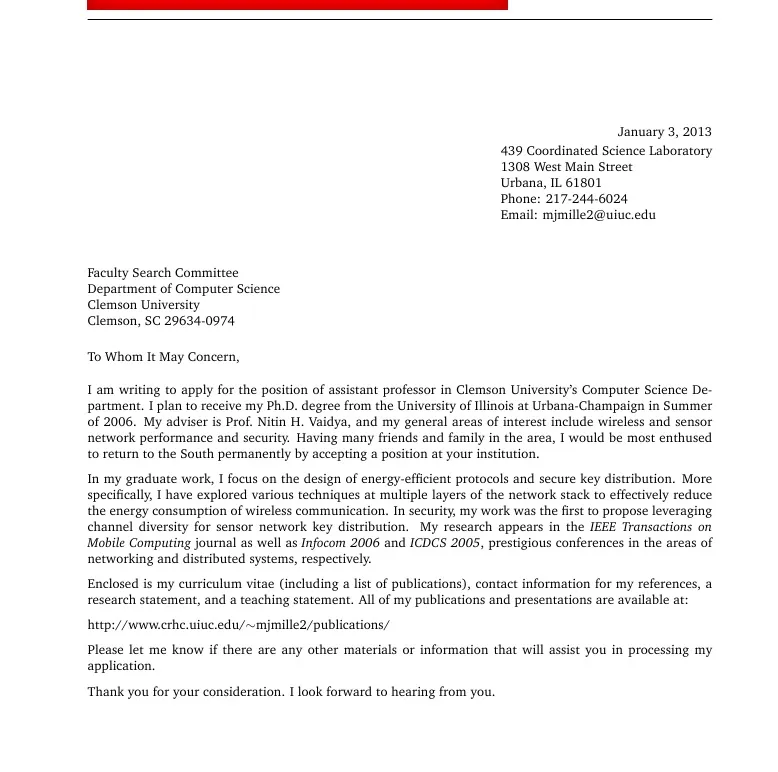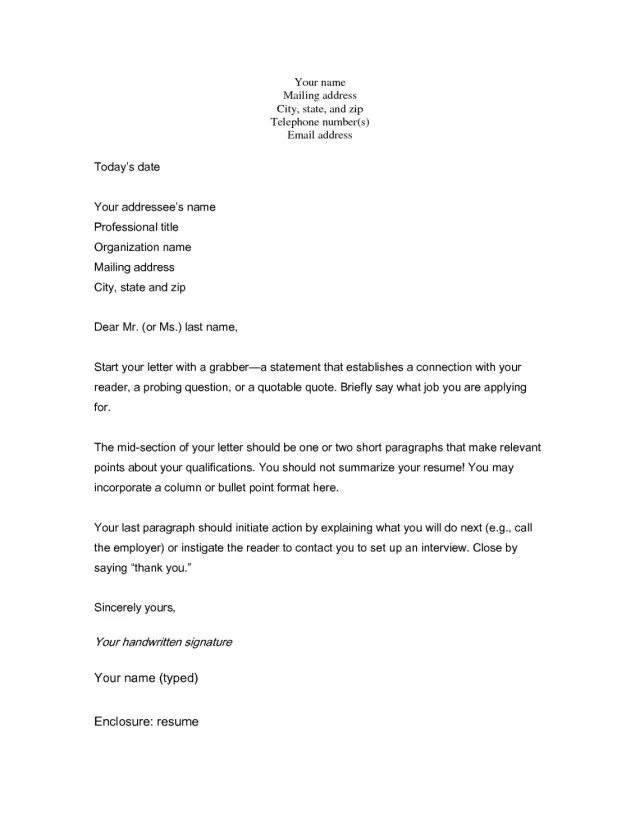Understanding the Challenge of Addressing a Cover Letter Without a Name
Addressing a cover letter correctly is crucial for making a positive first impression. However, what happens when you don’t know the name of the hiring manager or the person responsible for reviewing applications? This can be a common dilemma, especially when applying for jobs through online portals or when the contact information isn’t readily available. It creates an immediate hurdle, as you want to ensure your application demonstrates attention to detail and professionalism. The absence of a contact name forces you to find alternative ways to address your cover letter, which can affect the overall tone and impact of your application. Getting this right is vital, and understanding the different approaches available is the first step toward a successful job application.
Why You Might Not Know the Contact Person
There are several reasons why the name of the hiring manager might be missing. Sometimes, job postings are intentionally vague to protect the privacy of the individual or to manage a high volume of applications. In other instances, the person in charge of recruitment may have recently changed, and the job description hasn’t been updated. Furthermore, when applying through large online job boards or through a company’s general application system, the specific person who will review your cover letter and resume may not be immediately apparent. Understanding these underlying factors can help you approach the situation with a more informed strategy, as you realize it’s not always a reflection of a lack of effort on the company’s part but can be a common situation in the modern job market. Recognizing this allows you to confidently navigate the application process.
Strategies for Researching the Contact Person

Before resorting to a generic salutation, always try to find the hiring manager’s name. A personalized cover letter shows that you’ve taken the initiative to learn about the company and the role, and this can significantly boost your chances of getting noticed. Begin by carefully examining the job posting. Sometimes, the contact person or department is subtly mentioned. If the posting includes a company website link, visit the ‘About Us’ or ‘Contact’ section to see if you can find any relevant names or email addresses. Another excellent approach is to search for the company on professional networking sites like LinkedIn. This is often the most direct route to identifying the hiring manager or someone in a related role.
Using LinkedIn to Find the Hiring Manager
LinkedIn is a powerful tool for job seekers. Search for the company and navigate to the ‘People’ section. You can then filter by the department most relevant to the job you are applying for, such as ‘Human Resources’ or the specific department related to the role. Look for individuals with titles like ‘Hiring Manager,’ ‘Recruiter,’ or ‘Talent Acquisition Specialist.’ If you find a likely candidate, check their profile to confirm their role and consider sending them a polite message to introduce yourself and ask for confirmation. Be mindful of their time, and keep your message concise and professional. This extra effort demonstrates initiative, and can also provide you with a more accurate name for your cover letter.
Checking the Company Website for Contact Information
If LinkedIn doesn’t yield results, the company website can offer additional clues. Start by exploring the ‘About Us’ section, which often lists key personnel or provides information about the company’s structure. Look for a ‘Careers’ or ‘Join Our Team’ page. There may be contact information related to the hiring process, such as a generic email address for applications. You can also check for a directory or staff list. Even if you don’t find the hiring manager’s name, you may discover the name of the department head, which can be used to address your cover letter. Reviewing the website thoroughly before resorting to a generic salutation can significantly increase your chances of making a personal connection.
When Research Fails Alternative Salutations

When all efforts to find a specific name fail, you’ll need to use an alternative salutation. While using a generic salutation is not ideal, it’s better than addressing the cover letter to ‘Dear Sir/Madam,’ which can feel impersonal and outdated. The key is to choose a salutation that’s both professional and demonstrates your understanding of the situation. Keep in mind that even though you cannot personalize the letter with a name, the rest of the content should be tailored to show that you have researched the company and understand the role. This approach ensures that your cover letter still makes a positive impact, even without a specific contact name.
Using a General Salutation
Several general salutations are acceptable when you can’t find a specific name. ‘Dear Hiring Manager’ is a widely accepted and professional option, signaling that the letter is specifically for the person responsible for hiring. ‘Dear [Department Name] Hiring Team’ is another good choice if you know the department, such as ‘Dear Marketing Hiring Team.’ Using the department name personalizes the letter to the specific role. ‘To Whom It May Concern’ is less personal but remains a valid option. Avoid salutations that are too informal, such as ‘Hello’ or ‘Hi,’ as these might come across as unprofessional. The chosen salutation should be professional and align with the tone of your overall cover letter.
Choosing the Best General Salutation
The best general salutation depends on the information you have about the company and the job. ‘Dear Hiring Manager’ is generally a safe and effective choice, as it directly addresses the person in charge of the hiring process. However, if the job posting specifies a department, such as ‘Marketing,’ addressing your letter to the ‘Marketing Hiring Team’ would be more personalized. ‘To Whom It May Concern’ should be considered a last resort if you truly lack any other information. If possible, try to find some department or contact name. No matter which salutation you select, make sure it sets the tone for a professional and well-crafted cover letter.
Formatting Your Cover Letter Correctly

Formatting plays a crucial role in the overall impression of your cover letter. Even with the best content, a poorly formatted letter can undermine your application. Use a standard, easy-to-read font such as Times New Roman, Arial, or Calibri, with a font size between 10 and 12 points. Ensure consistent spacing throughout the document and maintain a clean layout. The letter should be one page long, and the information should be well-organized, with clear sections and headings. Proofread meticulously for grammatical errors and typos. Proper formatting ensures that your cover letter is easy to read and reflects your attention to detail.
Key Formatting Elements
Key formatting elements include the proper placement of your contact information, the date, the recipient’s information, and the salutation. Your contact information should be at the top of the letter, followed by the date. The recipient’s information, including their name (or title, if you don’t know the name), title, company, and address, should come next. Following the salutation, the body of your letter should be divided into paragraphs, each addressing a specific aspect of your qualifications or interest in the job. Use clear, concise language. End with a professional closing, such as ‘Sincerely’ or ‘Best regards,’ followed by your typed name. Pay attention to these details to enhance your cover letter.
Highlighting Your Skills and Experience
Even when you cannot personalize the cover letter with a specific name, the content should still be tailored to the job. Focus on highlighting your skills and experience that are most relevant to the position. Analyze the job description carefully and identify the key requirements. Then, provide examples of how you have demonstrated those skills in your previous roles. Use action verbs to describe your accomplishments. Instead of simply stating that you have experience in a particular area, provide concrete examples of what you have achieved. Quantify your achievements whenever possible. By highlighting your skills and experience, you will demonstrate your value to the prospective employer and make your application stand out.
Tailoring Your Letter to the Job

Customizing your cover letter to the specific job is essential. Generic cover letters often appear impersonal and show a lack of genuine interest. Before you start writing, thoroughly research the company and the role. Understand the company’s mission, values, and recent projects. Tailor your cover letter to reflect this understanding. Explain why you are interested in this specific role and company. Mention specific aspects of the job description that appeal to you, and explain how your skills and experience align with the requirements. Tailoring your letter demonstrates your enthusiasm, attention to detail, and genuine interest in the position.
Demonstrating Your Enthusiasm
Enthusiasm is a vital ingredient in a successful cover letter. Even when you are unsure of the hiring manager’s name, you can express your excitement for the job and the company. Show your interest by highlighting the aspects of the role and company that appeal to you. Explain what attracts you to the company’s mission, products, or culture. Demonstrate your knowledge by mentioning specific projects or initiatives that resonate with you. Enthusiasm helps you stand out from other candidates and reveals your genuine interest in the opportunity. This can be the differentiating factor in an application, so make sure your passion shines through.
Closing Your Cover Letter Effectively
The closing paragraph is your last chance to make a positive impression. Restate your interest in the role and thank the reader for their time and consideration. Express your eagerness to learn more about the opportunity and offer your contact information for easy communication. Consider adding a call to action by indicating your availability for an interview. Keep the closing brief and professional. Proofread it carefully to ensure that it conveys your message clearly. A well-crafted closing leaves a lasting impression and increases your chances of advancing to the next stage of the hiring process. It serves as a polite but powerful way to conclude your cover letter.
